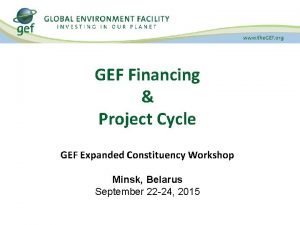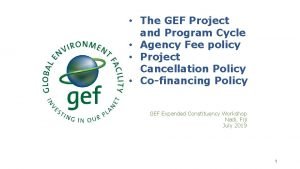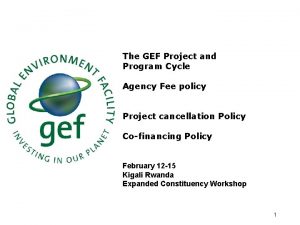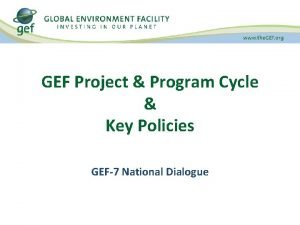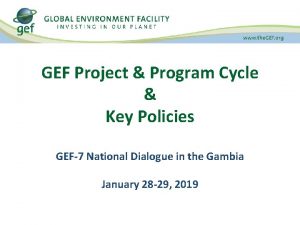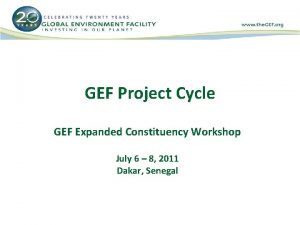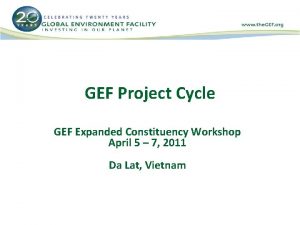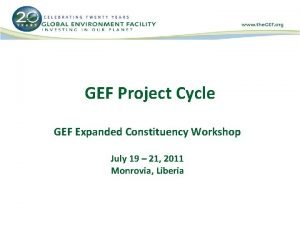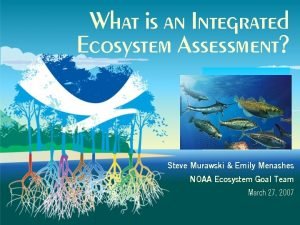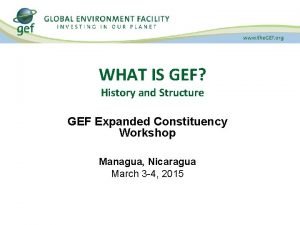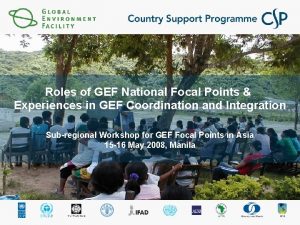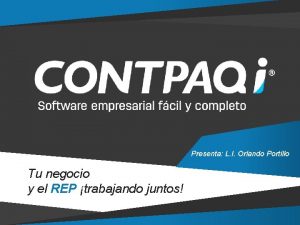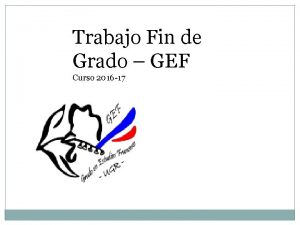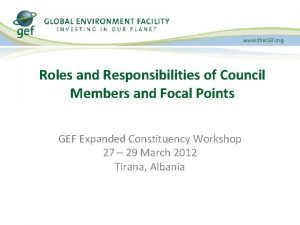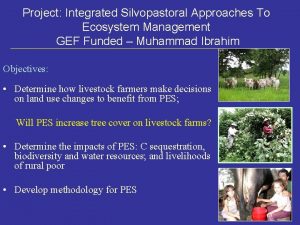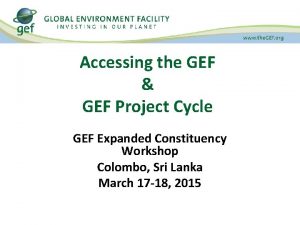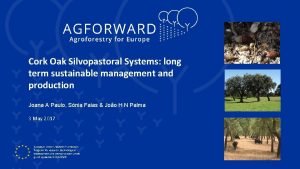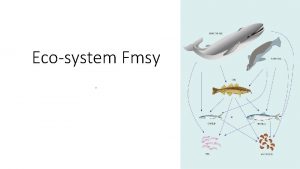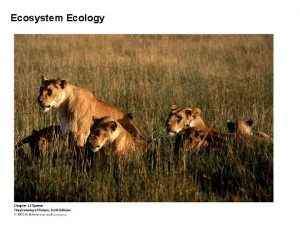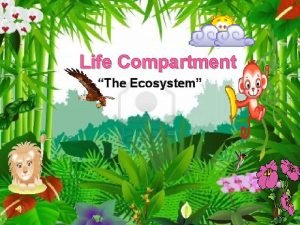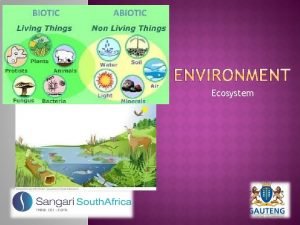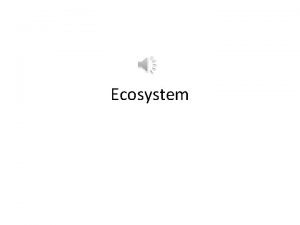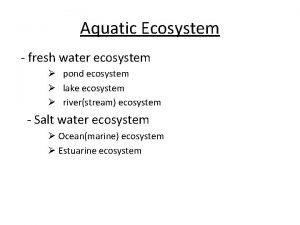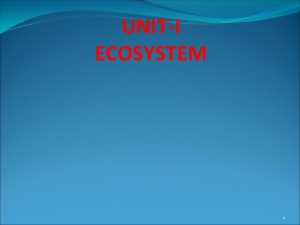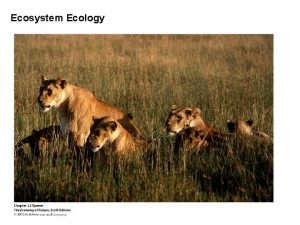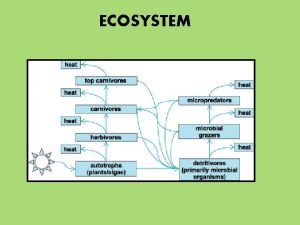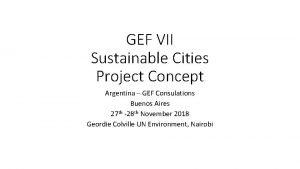Project Integrated Silvopastoral Approaches To Ecosystem Management GEF






















- Slides: 22

Project: Integrated Silvopastoral Approaches To Ecosystem Management GEF Funded – Muhammad Ibrahim Objectives: • Determine how livestock farmers make decisions on land use changes to benefit from PES; Will PES increase tree cover on livestock farms? • Determine the impacts of PES: C sequestration, biodiversity and water resources; and livelihoods of rural poor • Develop methodology for PES

Definition Silvopastoral systems are land use systems in which trees or shrubs are combined with livestock and pasture production on the same unit of land

Number of farmers collaborating Colombia Nicaragua Costa Rica Total Group A (control) 30 30 28 88 Group B (PES + TA) 52 77 74 203 Group C (PES) 26 30 31 87 Total 108 137 133 378 PES - payment of environmental services TA - Technical assistance

Arrangement for payment of environmental services Global beneficiaries Technologies SSP Fund for payment $$ Livestock farmer Monitoring institution Environmental Services Application of Land use index

Payment is based on annual increments in relation to base line. Ecological Points/farm Incremental Base line Years

Index by land uses and its potential to carbon sequestration and conservation of biodiversity Index Carbon Biodiversity Total index 0 0 0 # Land use 2 Degraded pasture 3 Native pasture without trees 0, 1 0, 2 8 Live fences 0, 3 0, 6 11 Fodder bank 0, 3 0, 5 0, 8 14 Native pasture high tree density* 0, 5 1, 0 20 Improve pasture high tree density* 0, 6 0, 7 1, 3 23 Young secondary vegetation 0, 6 0, 8 1, 4 24 Riparian forest 0, 8 0, 7 1, 5 27 Secondary forest 0, 9 1, 0 1, 9 28 Primary forest 1, 0 2, 0 * > 30 tree ga-1

Silvopastoral systems are win systems: 1) Increase productivity of systems 2) Generation of enviornmental services 3) Improve livelihoods of farmers and rural poor .

Impact of payment of environmental services on land use changes-Colombia

Impact of payment of environmental services on percent increase area in forest a b

Who will benefit from PES Lessons learnt from GEF-SSP project - Small farmers- higher PES/ha compared to large farms: However large farms significantly higher payments/farm - Small farms- higher base linequestion of additionally and how small farms will benefit? Impacts on policy setting

Payment for environmental services

Relationship between base line ecological index (points ha-1 2003) and incremental ecological index (points ha-1) Base line

Environmental services: carbon sequestration

Environmental services: conservation of biodiversity

Social and economics services: labor

Barriers for adoption of SSP -High cost for implementation - Labor availability - Lack of technical assistance and incentives -Transaction cost


Silvopastoral project: rentability of practices Note: Farm of 20 ha, Nicaragua Benefits of SSP practices NPV (50 years, 10%) IRR US$439 11. 8%

Silvopastoral Project: profitability of SSP with PES Note: Farm of 20 ha, Nicaragua Benefits of SSP practices NPV (50 years, 10%) IRR Without PES With PES US$439 US$1, 301 11. 8% 17. 6%

Impact of chage land use on labor at landscape level Total area: 4794 ha

Some concerns for pro-poor policies for PES Land tenure: private vs. communal land management What Environmental services: carbon localised and more easy to monitor, Biodiversity and water needs a landscape focus and therefore PES to cluster of farmers or communities– what arrangements for PES -Permanence and Risk of ES: eg forest fires -Transaction cost for monitoring and certification -Incentives for making changes- small farmers needs capital for establishing technologies- policies of microfinancing

Added value of products: value chains to benefit from PES: Ecological livestock farms: certified organic beef in Nicaragua with premium prices of 30% more than that of traditional systems. In addition farmers received PES n
 Gef project cycle
Gef project cycle Gef project cycle
Gef project cycle Gef project cycle
Gef project cycle Gef project cycle
Gef project cycle Gef project cycle
Gef project cycle Gef project cycle
Gef project cycle Gef project cycle
Gef project cycle Gef project cycle
Gef project cycle Gef project cycle
Gef project cycle Gef project cycle
Gef project cycle Seea in project management
Seea in project management Integrated ecosystem assessment
Integrated ecosystem assessment Introduction to software project management
Introduction to software project management Ipm integrated project management
Ipm integrated project management Integrated project portfolio management
Integrated project portfolio management What is gef
What is gef Gef roles
Gef roles Https://mifactura.gef.mx
Https://mifactura.gef.mx Wvu registar
Wvu registar Alteracion matricula ugr
Alteracion matricula ugr Focal point
Focal point Ran gef
Ran gef If abc and gef are congruent by the asa criterion
If abc and gef are congruent by the asa criterion

